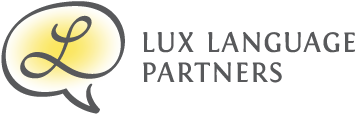On the glorious morning of June 9th, 2015, the Italian built naval ship, Villavisencio, docked at Pier 66, in Seattle . I was invited to accompany Tina McCollum, president of the Snoqualmie Sister Cities Association, to greet the arriving frigate vessel, to our State of Washington and on behalf of the City of Snoqualmie.
The morning was unusually warm and clear with a fantastic view of Mt. Rainier standing proud for our visitors. That morning, I had the opportunity to meet Señor Paz, who serves aboard the ship, and commander Daniel Herrera. They were some of the most polite individuals that I have meet in my travels of the world. This would go onto to strengthen an understanding of whom the Peruvian Navy represents and honors, the Admiral Grau, "the Gentleman of the Seas."
The route of the Villavisencio included making cultural exchanges during stops and honoring the dedicated work of their Cadets, and their accomplishments. The City of Snoqualmie has a sister city in Chaclacayo, and was working to build a relationship for shipping humanitarian aid to our sister city, via our naval partners, on board the Villavisencio.
On June 10th, we welcomed Captain Jose San Martin, and some of those aboard the ship, to Snoqualmie. We shared with them our natural gem and important indigenous site and source of power, Snoqualmie Falls. They also had a chance to take a ride to view the Falls aboard the historic train from the Northwest Railway Museum. In Peru, a train still runs on the ETEN line, manufactured by the same builder as the train they rode on in Snoqualmie. To finish the visit to the valley, they made a stop at Rattlesnake Lake; a few of them swam.
As the sun went down, we returned to Seattle for an evening on their ship. Snoqualmie Sister Cities Association, along with other representatives from the state were invited for the opportunity to experience a tiny window of the deep, rich, historical culture of Peru and the Marineros de la Guerra. They so graciously shared their ceviche, pisco served in high-ball glasses, music, and dance steps, specifically la Marinera, a dance that belongs to the culture of Peru.
The experience brought back the sweet and salty memories of spending many summers, on the Puget Sound at Mission Beach, with my grandfather, at that time Sheriff of Snohomish County, and once a part of the US Navy, during World War II. Spending time on the Villavisencio connected memories to my grandfather, coming home from his office each day in Everett, where he was able to view the naval ships come and go in the comfort of his own home. He would take off his hand-tailored suede woven suit jacket, he proudly had made in China, in exchange for his old boating shorts and white tank top. My grandmother would mix his double scotch and water on the rocks, once in awhile served in a high-ball glass, and he would sit on the deck for the rest of the evening until long after the sunset, and watch the boats, ferries, and oil-rigs through his binoculars, and comment on what everyone was doing, and whether or not they were wearing a life-jacket.
That man taught me how to drive his little dingy and pull up the outboard motor with my two feet on the side of the boat, and how to go out and pull up the very heavy crab pot on my own, to bring back some Dungeness for dinner, while he was at work. I also recall going out to meet a shrimp boat a couple of times, to buy a paper lunch sack of shrimp. He enjoyed pulling up for the meet and exchange. Once in awhile my grandpa would drive around to Tulalip Bay to the tiny Marina. We would get gas, at the dock and he would talk to tribal friends. And he often said when we ate dinner, watching the sun set over Camano Island "this is better than Canlis." As I have learned as an adult, he might be right.
I see so many cultural similarities, between the people of the greater Pacific region, that I did not know existed until this encounter, as well as some very distinct differences. My grandmother, the most put together, organized and proper woman, now in her 80's, continues on for him, now that he is gone. She still goes to meet his ship-mates every spring for a reunion somewherein the country. And she still loves set sail on a big ship to new ports, including this last year.
What a great day, bridging beautiful new memories to ones that had gone away with the tide. The tide goes out, but it does come back. May we be able to continue to bridge opportunities and hopes for the future.
-Sharilyn Lux

